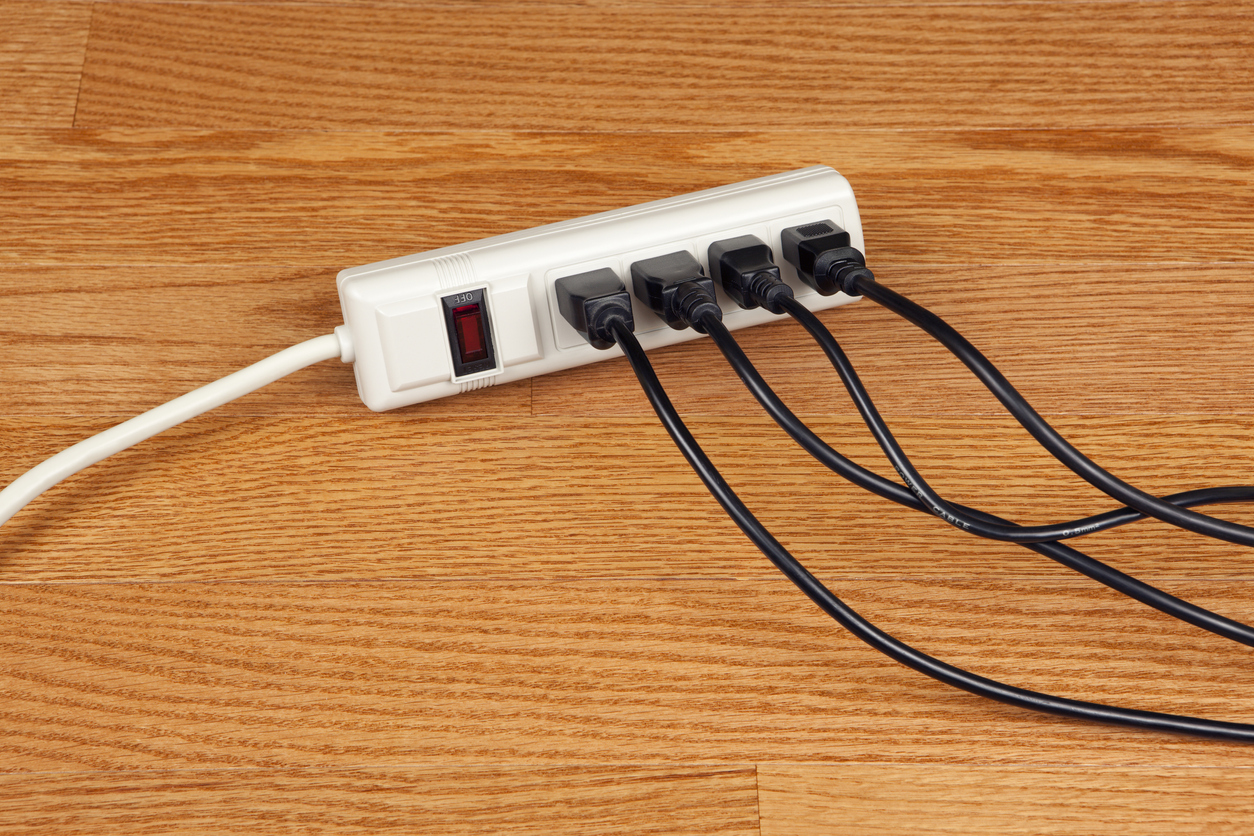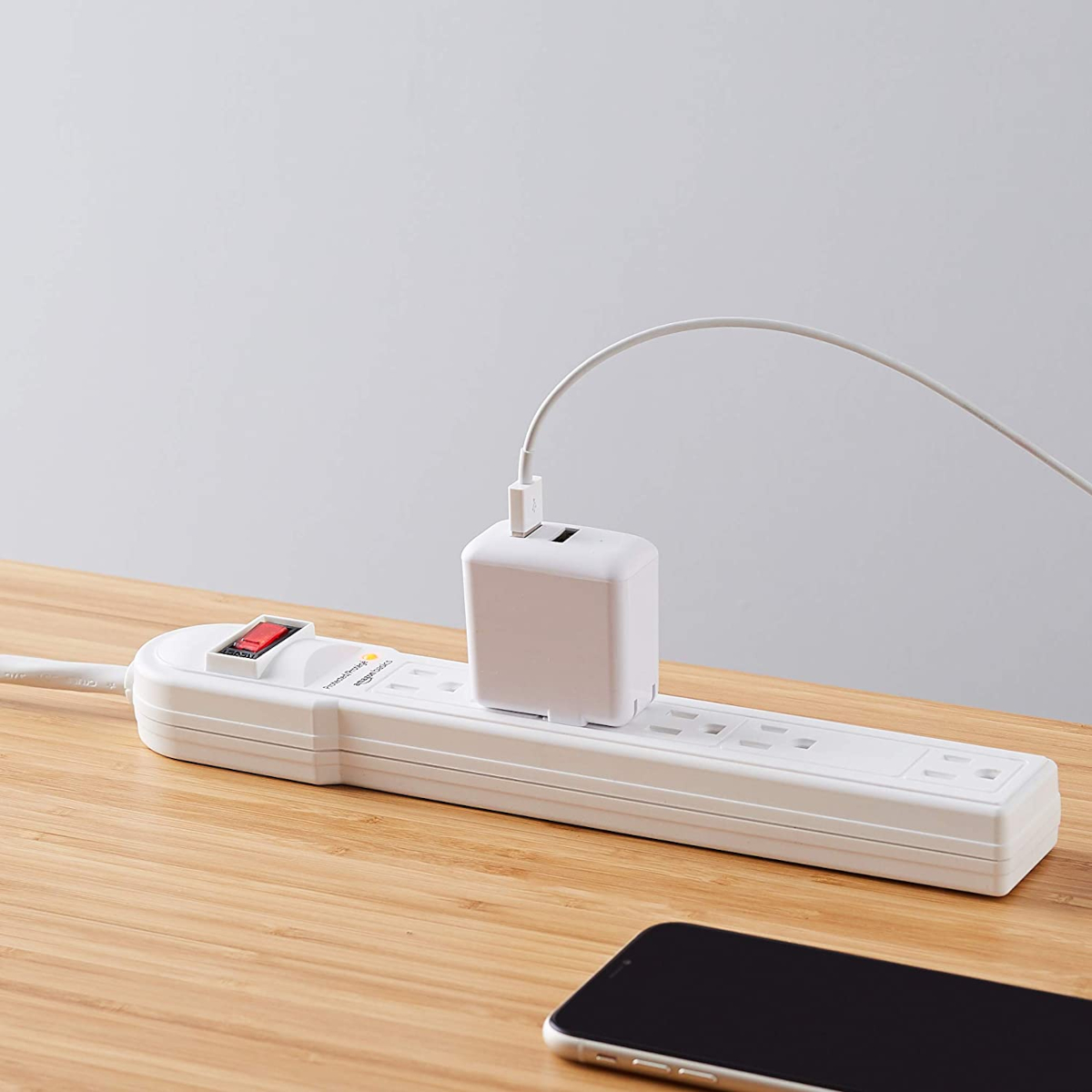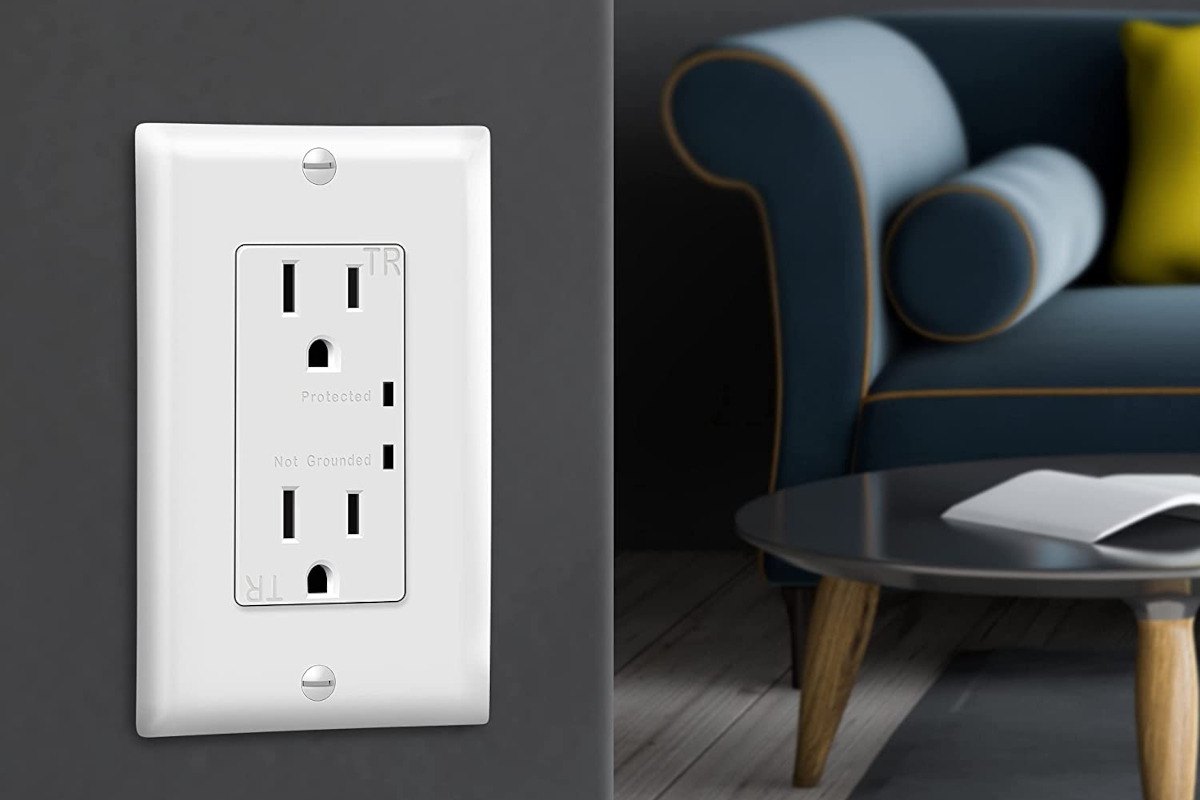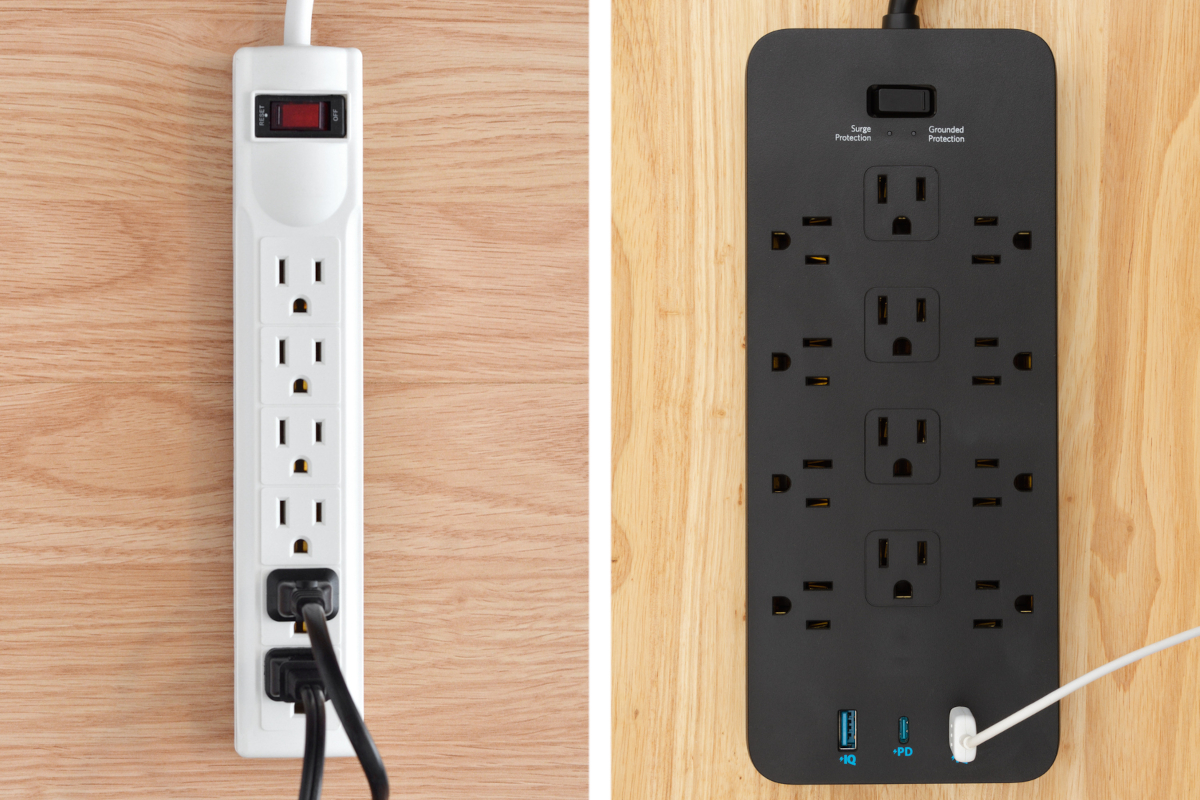We may earn revenue from the products available on this page and participate in affiliate programs. Learn More ›
People are often confused about the difference between surge protectors and power strips, and it’s perfectly understandable. They can look very similar to one another, and surge protector outlets look identical to standard outlets. Products described as “surge protector power strips” don’t help matters, either.
While there are certainly overlaps in the way they function, there are also vital distinctions between these two devices. Choosing the wrong one could potentially damage or destroy your home electronics. So let’s look at the surge protector vs. power strip question in greater detail.
RELATED: The 10 Best Extension Cords, Tested and Approved
A power strip contains electrical sockets that can power multiple devices from one outlet.

Almost every home has at least one power strip plugged into a standard wall outlet. Power strips can provide anywhere from two to a dozen additional outlets, and they’re useful just about anywhere—from kitchens to offices to workshops. Increasingly popular are USB power strips, which include USB or USB-C outlets for charging phones and tablets in addition to regular sockets. A properly rated outdoor power strip can even be used in the yard.
A power strip with nothing connected to it does not use any electricity when plugged into the wall, so they don’t need an independent on/off switch even though some are equipped with them. They might also come with mounting brackets so they can be screwed into the wall, and heavy-duty power strips may be encased in thick rubber that can withstand tough jobsite environments.
Surge protectors often look and function identically to power strips, but they also protect against power surges.

What complicates things is that most surge protectors in stores and online look just like standard power strips. So what does a surge protector do that a basic power strip doesn’t? In essence, it protects electrical and electronic equipment from damage, like overheating and burnt out circuits, that can occur as a result of a power surge.
What is a power surge, exactly? A power surge is a sudden spike in the electrical supply. There are two common causes:
- An electrical storm that causes a lightning strike. It doesn’t need to be a direct hit on the home, as a strike anywhere on the local power grid can cause a sudden rise in voltage.
- A fault at the supply end. Although power companies work hard to balance the flow of electricity, voltage spikes happen surprisingly often.
Either of these incidents can happen at any time, and they transpire more frequently than many people realize. A surge protector sends that extra current harmlessly to ground. An unprotected power strip will not, leaving electronics connected to one susceptible to damage.
Many modern power strips are built with surge protection—but not all power strips are surge protectors.
Most surge protectors on the consumer market are also power strips. Some power strips have surge protection built in, but many don’t. That’s why it’s critical to be able to identify which is which before making a purchase.
In addition to household electrical outlets, many surge protectors feature ports for phone, modem, ethernet, or coaxial cables to protect those kinds of equipment, too. These extra outlets will not be found on normal power strips, so their presence is one easy way to tell surge protectors apart from power strips.
There might also be helpful markings on the product’s exterior. Both types of devices should be UL-listed for safety, but the standards are different. A power tap labeled with “UL 1449” is a surge protector. Sometimes, though, those numbers aren’t shown. A surge protector might also be labeled as a surge protection device (SPD), but there’s no legal requirement for manufacturers to do so.
The one thing all surge protectors should have that power strips will not is a Joules rating, which shows the maximum amount of energy a device can absorb. That label must appear either on the surge protector itself or on its packaging. If it doesn’t have a Joules rating, it isn’t a surge protector.
Surge protectors don’t always resemble and operate like power strips, either.

A surge protector extension cord, or relocatable power tap, is the most common type of these devices and can be moved from place to place. However, not all surge protection devices are portable, as there are also surge protector outlets that are installed in walls. There are also Type 1 and Type 2 surge protectors, which are designed to protect an entire building against voltage spikes from a single fixed location.
Type 1 SPDs are external devices, often found at the base of lightning conductors. They offer very high levels of protection and can be fitted in residential locations, but their high cost means this is rare. More affordable Type 2 SPDs are fitted inside the home as an addition to the breaker box. The latter is the most common type of whole-house surge protector.
Standard power strips are usually cheaper than surge protectors.
Cost can be a factor when weighing up a power strip vs. surge protector purchase. A basic power strip is an uncomplicated device and is often cheaper than a comparable surge protector. That said, low-cost electrical surge protectors are widely available and generally don’t cost much more than unprotected power strips.
Durability and how often power strips or surge protectors need to be replaced are also factors. Unless there’s an overload, short circuit, or physical damage to an ordinary power strip, it can last for many years with proper care (but a lifespan of 3 to 5 years is average in most homes). The same is true of a surge protector in normal use.
However, after a lightning strike or power outage, a surge protector can burn out. It might happen after one incident, or it might take several. An indicator light on the surge protector will signal whether it’s still functioning or not, and it should be checked regularly. If the light isn’t on, then the surge protector needs to be replaced.
RELATED: Extension Cord Safety: How to Properly Power Items Away From Outlets
Important or expensive electronic devices should be plugged into surge protectors, just in case.

To wrap up the surge protector vs. power strip debate, let’s review the basics. A power strip is a way to plug multiple electrical or electronic devices into a single outlet, and that’s all it does. A surge protector similarly offers multiple electrical sockets, but it also protects the things plugged into it from power spikes.
Because they have different applications, a surge protector isn’t necessarily better than a power strip, or vice versa. Many everyday items, such as lamps, phone chargers, and speakers, are less susceptible to power surges and can be plugged into a basic power strip. Inversely, plenty of household appliances should never plug into a power strip or surge protector.
Computers and laptops, TVs, and other sensitive electronics can be destroyed by power surges in a fraction of a second, so it makes sense to plug them into a surge protector. If you consider the value of the equipment being protected, a quality surge protector is a worthwhile investment.


